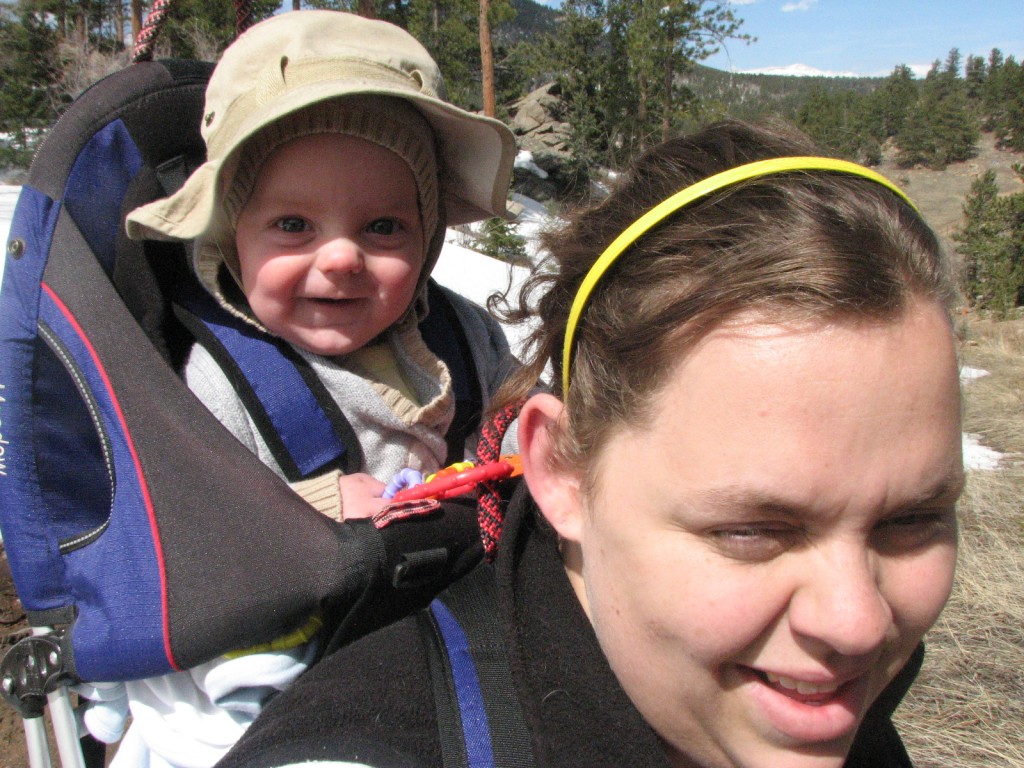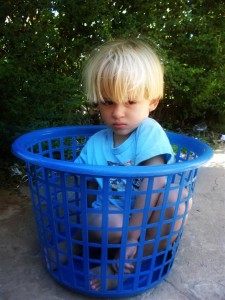When my second child was born, my first was just two years old. Life with a baby and a toddler was a lot busier than life with a singleton, and I didn’t have the luxury of spending hours sitting in the glider rocker nursing or lying on the floor watching my baby wave her arms in the air. Because of that fact, one of the most important pieces of baby gear was my ring sling.
Appearance-wise, it looked so simple. A long piece of olive green fabric attached to two silver rings. The non-ring end had a pocket with a zipper. (People said to stay away from black because it gets hot, and also linty. I thought the green color might be less girly in case my husband ever wanted to use it. He didn’t. I should have gotten the purple one I wanted.) And people were amazed that I paid fifty dollars for it. But I got so much use out of it that fifty dollars was a steal.
With my ring sling, I was able to breastfeed my infant hands-free while making a sandwich for my toddler. With my ring sling, I was able to carry my toddler across my back while pushing the baby in the stroller to get across a busy, dangerous street. With my ring sling, I was able to keep my baby, born during cold and flu season, tucked up against me and away from germy, poking fingers.
The kids are bigger now though. My son is almost 6 and long past the stage of being carried. My daughter is 3 1/2. I’ve used the sling twice in the past year. Once was when I took both kids and a friend of my son to see Disney On Ice by myself. I used the sling to carry my daughter on my hip so I had both hands free to help the boys navigate the parking garage and crowded arena. It worked great.
The second time was this past week. My daughter had been napping and I had to wake her up to go pick up her brother from preschool, but she was still groggy and sleepy. Rather than waste gas to drive the five blocks to school, I used the sling to position her so she could lay her head on my shoulder, draped the long end of the sling over her face to shield her eyes from the sun, put my keys and phone into the pocket and walked.
Some of the other moms were surprised. They thought she might be too heavy, or that my back must be aching. And that really wasn’t it. She is small for her age, but my back felt fine. And while carrying her for five blocks in my arms would have been difficult, the sling was doing most of the work.
On the way home though, I started to feel uncomfortable. Again, not because of her weight, but because it was 80+ degrees and despite my shorts and tank, carrying her was making me hot. Seriously hot. As in glug water and lie on the couch to recover hot.
It may be time to hang up my sling. At almost 6 and almost 4, we’re approaching not having kids small enough to carry. I’m done having babies. I’m done babywearing. I’m done breastfeeding and co-sleeping.
At this point, I’m curious how parents with older children continue to practice attachment parenting. I never thought much beyond the baby and toddler years, but I’m looking at it now. And contemplating how to incorporate the principles into my parenting style as I raise older kids.
Those of you with elementary age children, tweens and teens–how do you continue to use AP practices into those later years?



 In Part 1 of this two part
In Part 1 of this two part  I started this year with the intention of learning how to be happy and how to take care of myself. At the time, I didn’t know I was getting a divorce or about to experience all of the changes and challenges that go along with it.
I started this year with the intention of learning how to be happy and how to take care of myself. At the time, I didn’t know I was getting a divorce or about to experience all of the changes and challenges that go along with it.

